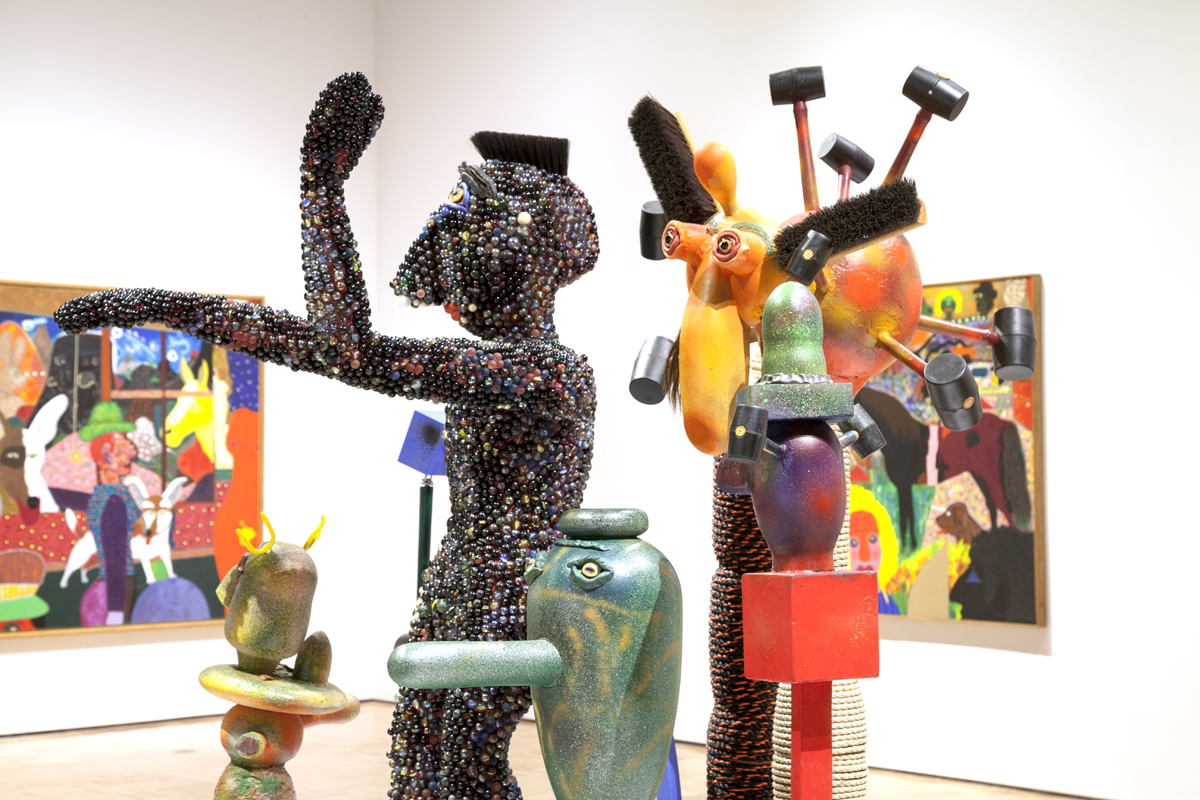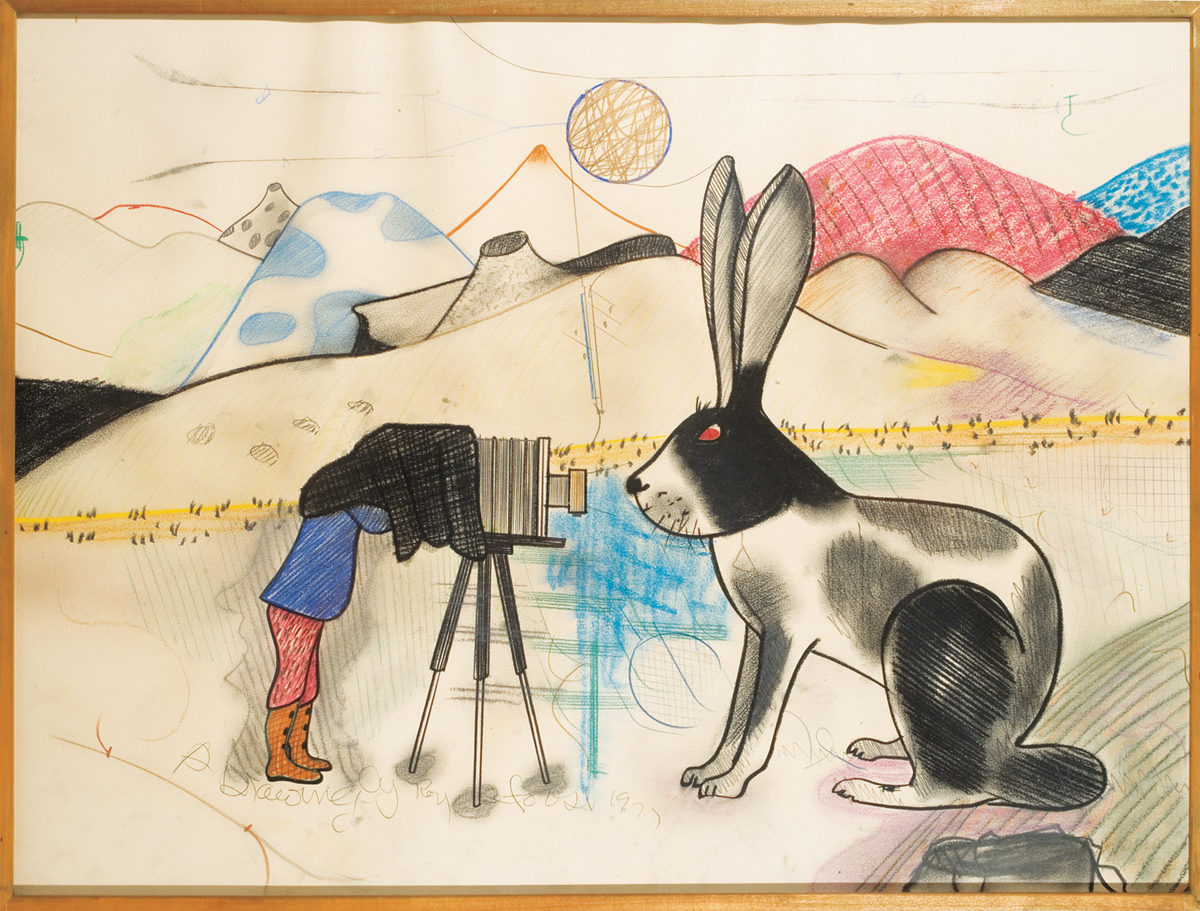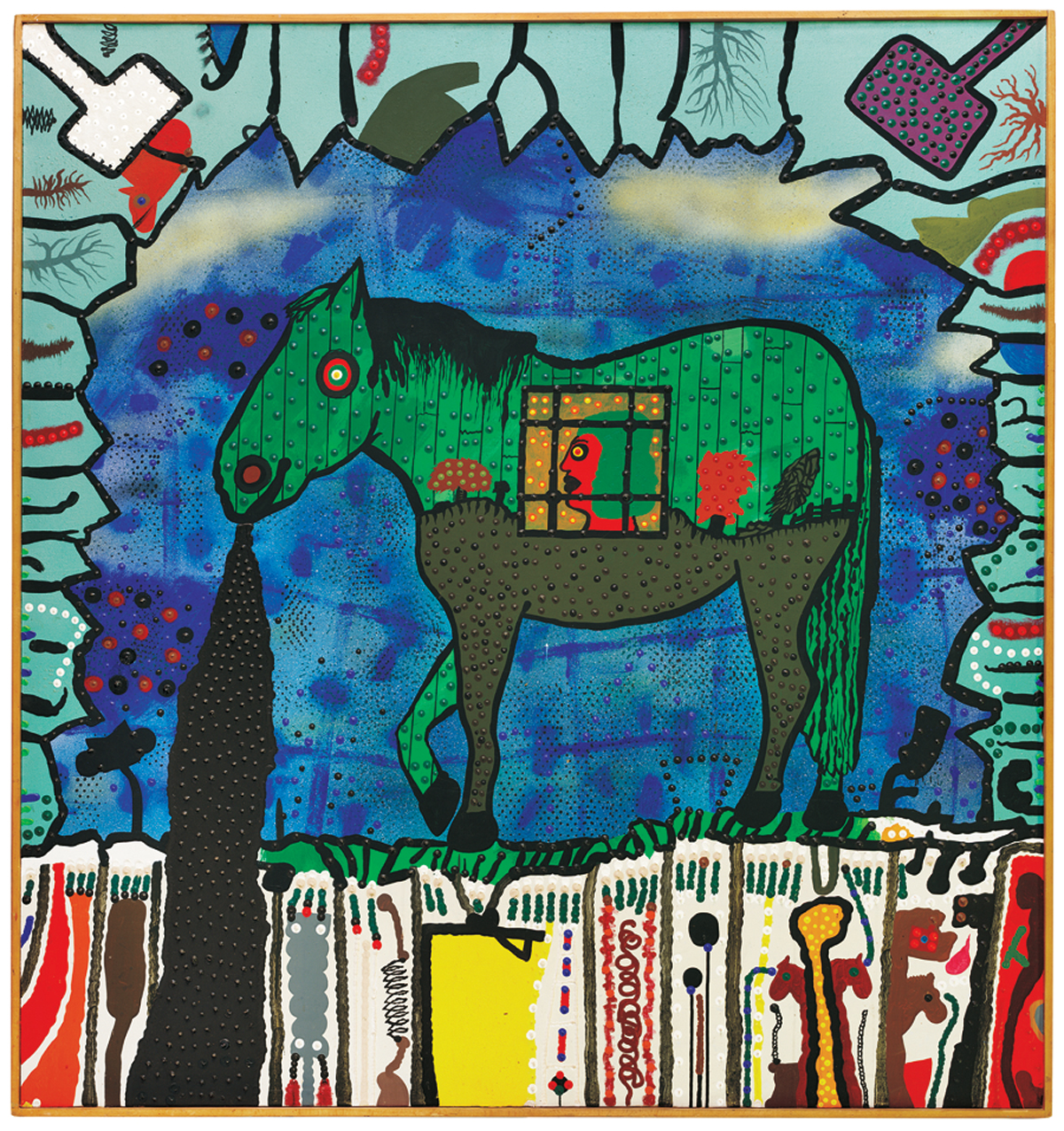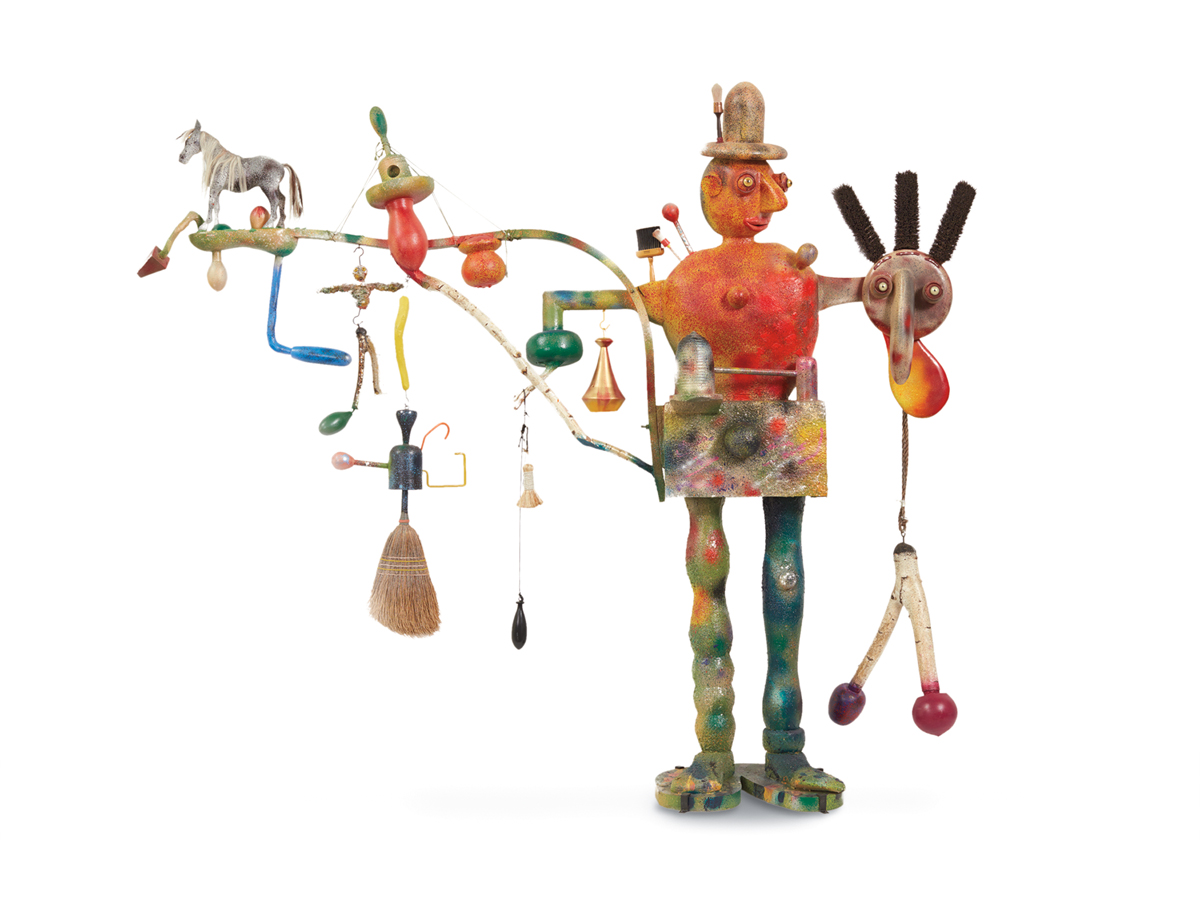Eight years ago, when I first arrived in the Bay Area, I knew next to nothing about Roy De Forest and his UC Davis compatriots (including William T. Wiley, Robert Arneson, Peter Saul, the legendary list goes on). An early visit to the di Rosa collection, with its vast holdings of eccentric, cartoonish, decidedly funky Northern California art — De Forest works included — left me completely flummoxed. “What is this stuff,” I wondered. “And why would anyone collect it?” It simply wasn’t the conceptual, minimal, finish-fetish art I was used to calling art.
But over the years, something changed. The Bay Area and its history of counterculture movements, art scenes full of sardonic humor, groan-worthy puns and true camaraderie, won me over. The sunshine helped. The Oakland Museum of California’s Of Dogs and Other People feels like a personal reward for a conversion in taste.

While other Bay Area institutions double down on the 50th anniversary of a particular season, OMCA instead devotes its summer exhibition space to a Bay Area artist whose story didn’t start — or end — in 1967. Of Dogs and Other People is the wonderfully titled, long-overdue retrospective of the late Roy De Forest, whose six-decade career evades easy categorization.
His exuberant, frenetic paintings, embellished frames and colorful sculptures capture the psychedelic energy of the 1960s as it flowed into the idiosyncratic, so-called Funk movement (which De Forest preferred to call “Nut Art”). The exhibition itself, arranged thematically rather than chronologically, gently guides viewers through a phantasmagorical world of De Forest’s own imagining: a world full of giant rabbits, indecipherable treasure maps, swirling night skies and plenty of wagging tongues.
If you’re seeking deep biographical information, historical context and critical analysis of De Forest’s work, Of Dogs and Other People, the exhibition, is not the place for that; Of Dogs and Other People, the exhibition catalog, is. Punctuated by listening stations featuring audio responses by everyone from a fifth-grader to a sword swallower, the exhibition privileges individual interpretation, guided by wall text that poses introspective questions rather than explanations of the specific whats and whys of a given piece of art.

For those used to spending more time reading a chunk of wall text than looking at the work of art it describes, this curatorial approach may be frustrating. I found it liberating.
De Forest may be best known, as the exhibition title confirms, for paintings like Country Dog Gentlemen, a wacky Henri Rousseau-esque scene in which at least nine crazy-eyed dogs peer out of the canvas, punctuated by thick dots of paint and what might be the thick trunk of a baobab tree. De Forest’s painted menagerie includes not just canines, but horses, chickens, rabbits, birds, bulls and all kinds of humans. And the scenes they occupy are not always whimsical. In Dogcart from Hell, a horned devil, haloed by the moon, stares out from behind a tree while a man drives the eponymous, fiery-wheeled dogcart through spooky nighttime desert.

If De Forest’s paintings provide viewers with windows into the artist’s imagination, he also gave the characters within his paintings the opportunity to “see through” their own surroundings, often in the form of framed windows, or in the case of Inside the Bull, a portal in the animal’s side that opens up to a tropical seaside view. (In a truth almost stranger than fiction: When De Forest joined the faculty at UC Davis in 1965, he likely encountered the veterinary department’s fistulated cows — cows with actual windows into their stomachs.)
Many of De Forest’s paintings feature heavily built-up surfaces and elaborate artist-made frames. The frames, carved from wood, covered in paint and embellished with eccentric objects (push pins, taxidermy eyes, round brushes and coat hooks) extend the surreal tableaux of the paintings into their everyday surroundings. But it’s sculptures, or “constructions,” as he called them, where the combinations of shape, color and texture achieve their zany glory.

In El Hombre Grande, the sculpture’s right arm devolves into a conglomeration of hanging objects and figures (including a speckled horse, complete with mane), as if the elements from De Forest’s paintings have entered the third dimension. The punnily titled Marble Man (featuring a figure covered in marbles) is full of faces, reminiscent of Country Dog Gentlemen, but this time De Forest renders the creatures in inanimate objects, wrapping protrusions in burly rope.
If this sounds magnificently tactile, the OMCA exhibition designers have a cure for what surely will be a universal desire to touch De Forest’s many and varied surfaces: a hands-on room that resembles the world inside a bull, filled with felt-covered walls and cut-out shapes to arrange to your heart’s desire.
When De Forest died suddenly of cardiac arrest in 2007, the Sacramento Bee reported that relatives used “the same language” to describe the artist and his work: “whimsical. Delightful. Charming, yet penetrating, intense, and full of meaning.” Of Dogs and Other People captures that spirit by refusing the aesthetics of boredom that dominate many museum retrospective in favor of a joyous celebration of De Forest’s immense creative output.

‘Of Dogs and Other People: The Art of Roy De Forest’ is on view at the Oakland Museum of California through Aug. 20, 2017. For more information, click here.